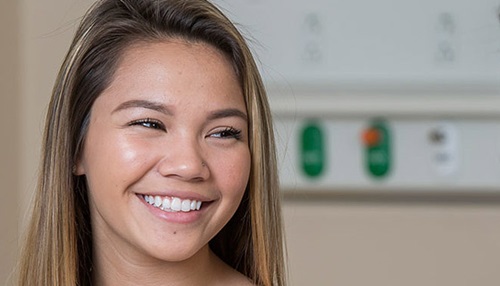The Stages of Puberty for Girls
Featured Expert
Puberty Changes in Girls - On Call for All Kids
Adolescence for girls and boys is a time where many changes happen. Puberty brings physical, hormonal and emotional stages and although each child has a unique journey, we want to let you know that these changes are normal. Jasmine Reese, M.D., medical director of the Adolescent and Young Adult Specialty Clinic at Johns Hopkins All Children’s Hospital, focuses on some of the puberty changes for girls on this week’s On Call for All Kids.
When does puberty start for adolescent girls and what is the first sign?
For girls, the stages of puberty start around the age of 8. This may sound young, but we are seeing physical puberty changes start younger and younger and depending on genetics, you may even start to see puberty changes at the age of 7. The first sign of puberty for girls is breast development or breast budding. You may hear your doctor use a fancy term for this called thelarche. If you don’t notice breast budding by the age of 13 you should be sure to have a check-up with your pediatrician or adolescent medicine doctor.
What are other puberty changes girls can expect?
You can expect several changes throughout the ages of 8-16 and these include hair growth on different body parts including the arm pits and outside of the vagina. You will start to notice more sweat, and sometimes this is smelly sweat so don’t forget to remind your teen to take daily showers and routinely use deodorant.
You will notice an increase in acne on the skin. Acne can appear not only on the face but sometimes on the chest and back. Girls tend to have an increase in body fat mass as they go through adolescence whereas boys tend to have increase in muscle mass. Girls generally will go through a growth spurt before boys and will notice that they are typically taller than many of the boys in class while in middle school.
Lastly, girls will experience the onset of a menstrual period. Periods can be light, heavy, or sometimes skip months in between cycles in the first one to two years after starting, and these can all be normal changes. If bleeding becomes too heavy where they are soaking through clothing or bed sheets at night, or if they are missing school or activities because of period flow or pain, they should see their pediatrician.
Tips for Parents
Although discussions of puberty stages and the female reproductive system can be awkward to talk about with young girls, it is important for parents to start these discussions before changes happen so your tweens and teens can best prepare and feel more comfortable when puberty does start.
It is also important to use the correct anatomy terms when having these discussions. We are used to saying words like “private parts” or using nicknames for body parts, but it is a healthy practice to use the correct words such as “vagina,” “breasts,” “menstrual cycle” or “period” when educating your kids. This will help normalize the changes they go through during puberty and help them to feel more confident and comfortable in their own skin.
Johns Hopkins All Children's Adolescent and Young Adult Specialty Clinic

Johns Hopkins All Children’s Hospital in St. Petersburg, Florida, offers adolescent and young adult specialty care for patients at all stages and support the transition from childhood to adulthood. Including specialized care for the physical, mental and social well-being of adolescents and young adults.

.jpg?h=100&iar=0&w=80&hash=60D25C80DAEDB23650035E58C0E65739)





